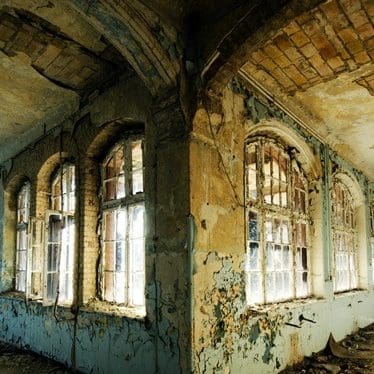DILAPIDATIONS
Tenants are already faced with substantial business premises occupancy costs such as rents and rates, and then, usually at the end of their occupational lease, they are served with a schedule of dilapidations; the other bane is commercial property occupation.
The head of Building Consultancy explains how to avoid the charges.
Dilapidations are breaches of covenant for which a business tenant is liable under the terms of a lease. The liability under the lease usually includes an obligation to repair and decorate; however, there are several ways in which tenants can minimise costs. Here we deal with frequently asked questions relating to dilapidations:
What can a tenant do to safeguard against dilapidation charges?
Any tenant considering signing a lease should seek professional advice in respect of the liability. One way of minimising liability is to agree on a schedule of condition that will accurately record the condition of the premises at lease commencement. The repair covenant can then be limited to no better than that at lease commencement.
If damage occurs to a leased property, what does the tenant need to do?
Dilapidations need to be properly considered well in advance of the expiration date of the lease. This will allow the tenant to appoint appropriately qualified advisors who can assess the level of liability associated with any repair. The advisors will open discussions with the landlord in order to agree on an amicable solution, whether it is an undertaking of work or a cash settlement.
It is good practice to keep on top of dilapidations, and repairs are best dealt with annually to avoid a backlog of repairs at lease expiry, which otherwise can lead to unexpected cash flow problems.
How can we limit the liability?
Tenants need to be aware of the landlord’s intentions at the end of the lease. A tenant’s liability for dilapidation is only as great as the loss the landlord suffers as a result of the tenant’s breach of the lease covenants. Dilapidations are not simply a money-making exercise for the landlord!
If the landlord were to substantially alter the property, the tenant may not be liable for some of the repairs arising out of the lease. For instance, if the landlord converts an office building into a residential building (a common strategy in today’s market), there won’t be any loss to the landlord as a result of the tenant’s lack of repair because the conversion works would make any previous repairs useless.
An example is where the landlord wouldn’t be able to claim for the cost of repairing a damaged wall if the same wall were to be demolished as part of the conversion work.
The value of the landlord’s loss needs to be identified, because if there is no loss, there is no claim!
Is a tenant liable if they alter the premises?
A tenant is usually liable for the cost of putting the property back into its original condition and layout at lease commencement.
If a tenant undertakes alterations, he must ensure that a licence for alterations (permission) is obtained. The licence will usually include a “re-instatement clause,” which will detail what reinstatement work the tenant needs to undertake before the lease expires.
Dilapidations are usually limited to the diminution of the value of the property being returned to the landlord; however, re-instatement clauses are obligatory, and the landlord can demand money in lieu of reinstatement works even if the alterations are an improvement to the value of the freehold property.
Where can tenants go for advice or help?
Chartered building surveyors usually deal with dilapidation issues and provide advice for tenants on how to mitigate losses associated with business occupancy and repair.
For information and advice, please contact the Building Surveying Team directly at Roger Hannah., visit our dedicated Dilapidations Department or fill out our contact form to receive free initial advice.
